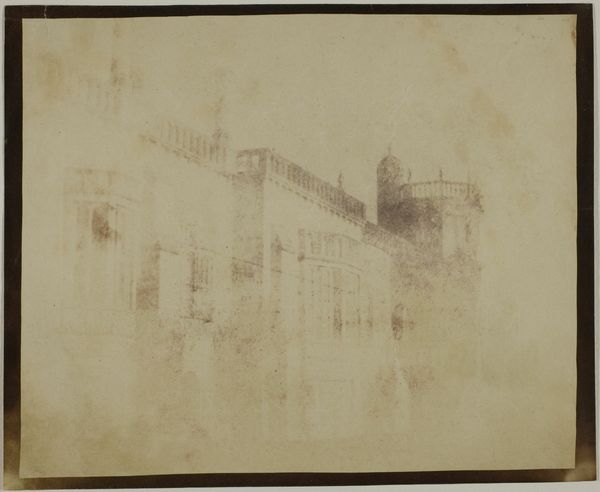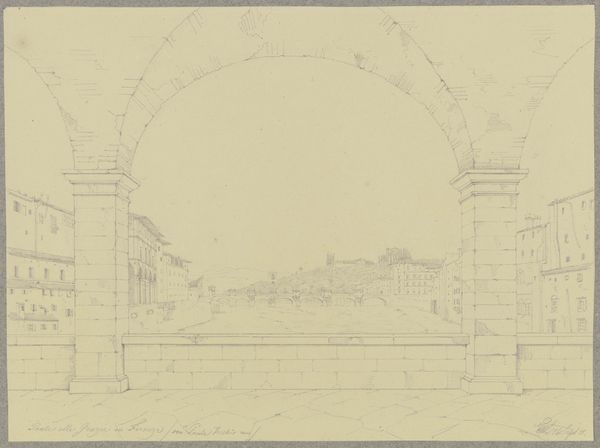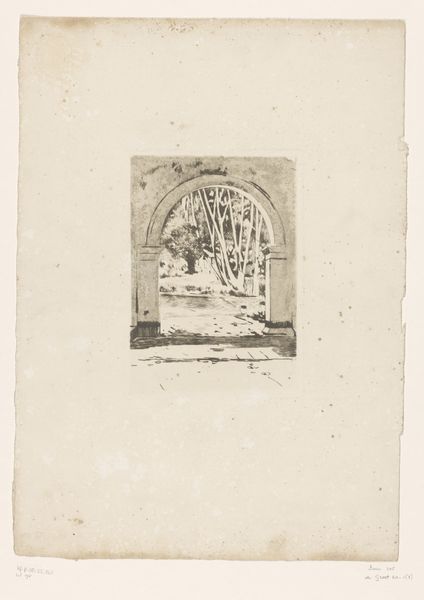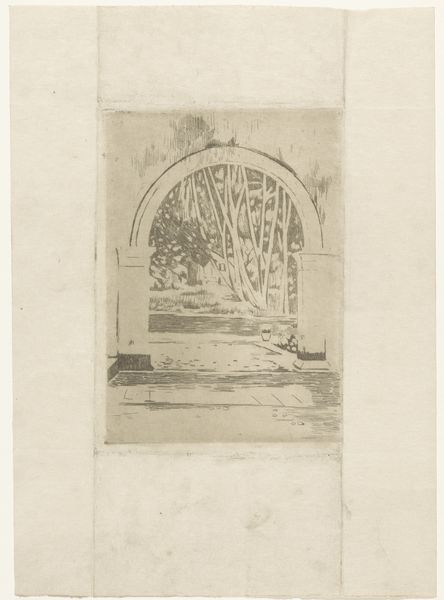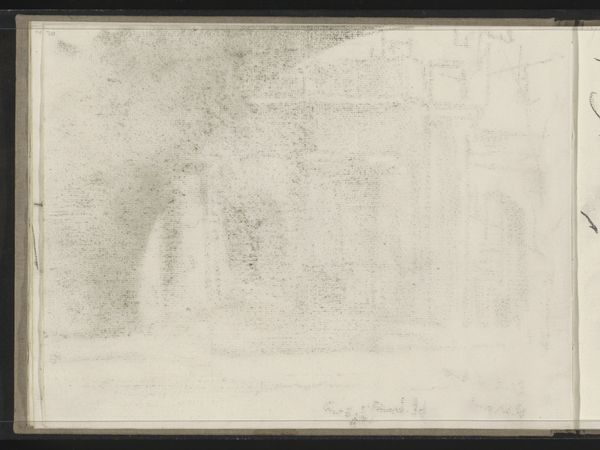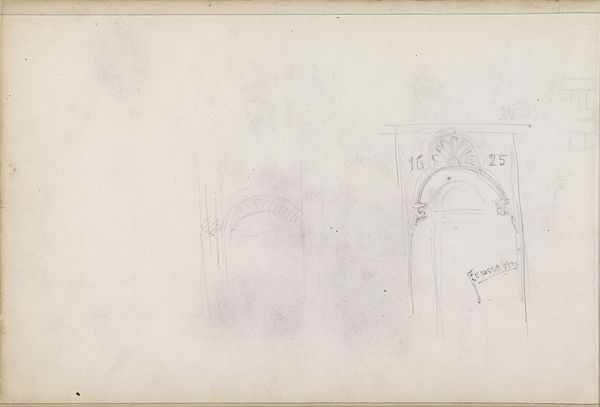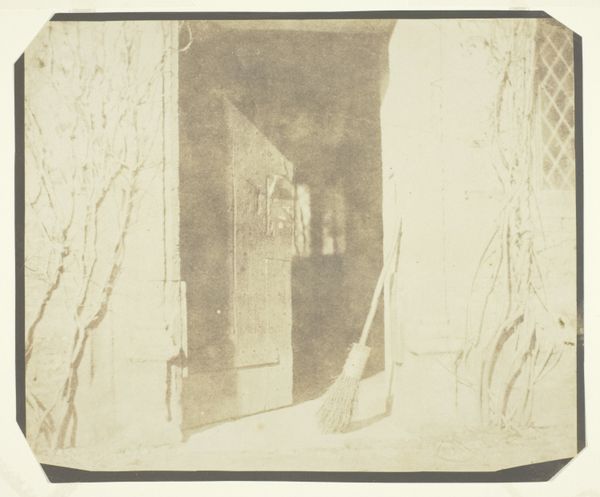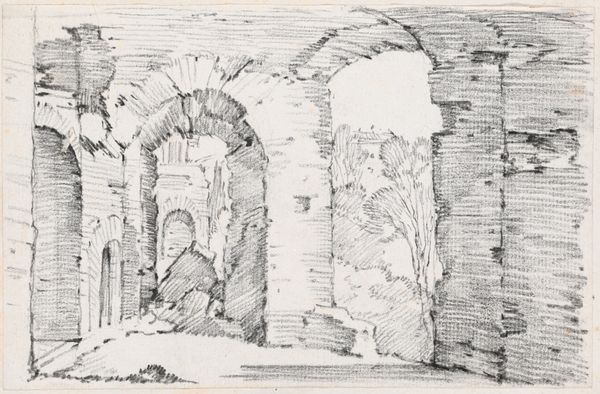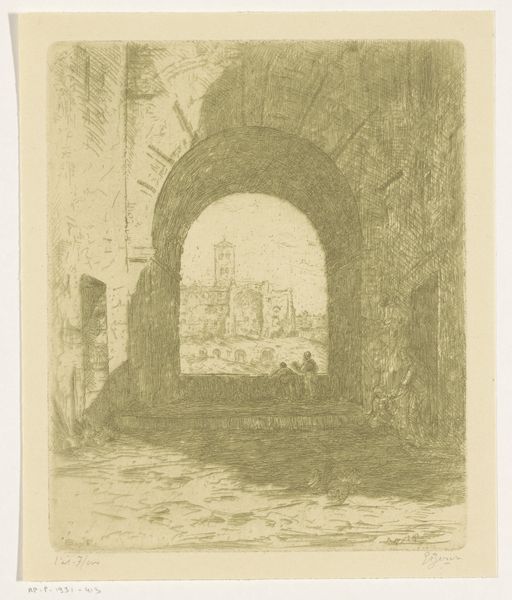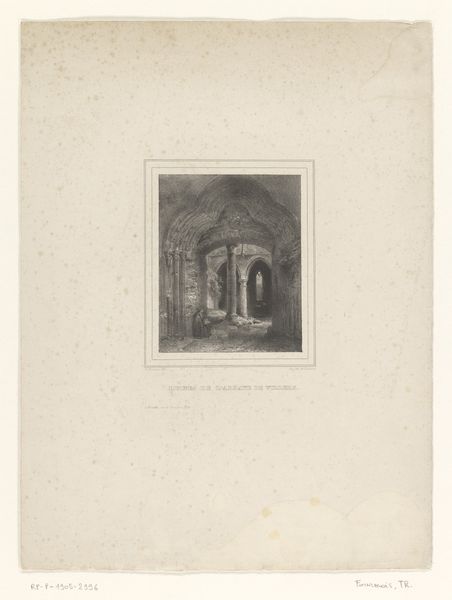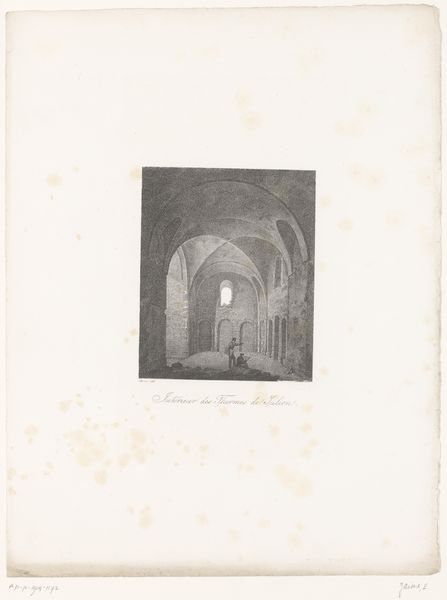
print, daguerreotype, paper, photography, architecture
# print
#
landscape
#
daguerreotype
#
paper
#
photography
#
romanticism
#
architecture
Dimensions: 16.3 × 20.4 cm (image/paper); 24.1 × 30.4 cm (page/mount)
Copyright: Public Domain
Curator: Before us we have William Henry Fox Talbot's "Entrance Gate, Abbotsford," a photographic print from 1844, currently residing at the Art Institute of Chicago. Editor: It's almost ghostly. A liminal space caught in pale shades, the architecture feels heavy yet insubstantial, like a memory fading at the edges. What exactly is Abbotsford? Curator: Abbotsford was the home of the Scottish novelist Sir Walter Scott. Talbot visited it to document its architecture. Think about that symbolism: Abbotsford, a carefully constructed homage to the past, documented through a technology brand new at the time. Editor: I’m particularly struck by that heavily gridded gate. In its time period it reflects deeply class disparity in Victorian Britain. The structure signifies inaccessibility and enforced socio-economic constraints upon those locked outside those very gates. Curator: Interesting observation! I tend to see gates and entrances as transitional markers more than pure barriers. Note the romantic architectural style – crenellations at the top, pointed arch – referencing medieval castles and chivalry. Talbot seems very concerned with that kind of historical encoding. Photography gave a unique capacity to rapidly proliferate romantic symbols. Editor: Romantic symbolism at whose expense, though? Isn't Romanticism as an artistic tendency complicit with British imperial pursuits abroad? A carefully composed fantasy that papers over harsh colonial realities. Perhaps that’s the origin of the spectral, “ghostly” affect I get from it. Curator: It makes sense to interrogate Talbot's image within those political frames. It certainly reflects the artistic trends and aristocratic tastes of the time. I read in that muted pallete something more melancholy and psychological: the past never truly accessible or understandable. Editor: That is what’s beautiful about viewing images now, we’re able to add to existing histories. Perhaps images such as “Entrance Gate, Abbotsford” were always designed to eventually invite a multiplicity of stories. Curator: Precisely, our evolving perspectives offer us something very enriching and allows a cultural object to never feel old. Editor: The visual traces of that legacy can provoke fascinating contemporary discourse.
Comments
No comments
Be the first to comment and join the conversation on the ultimate creative platform.
